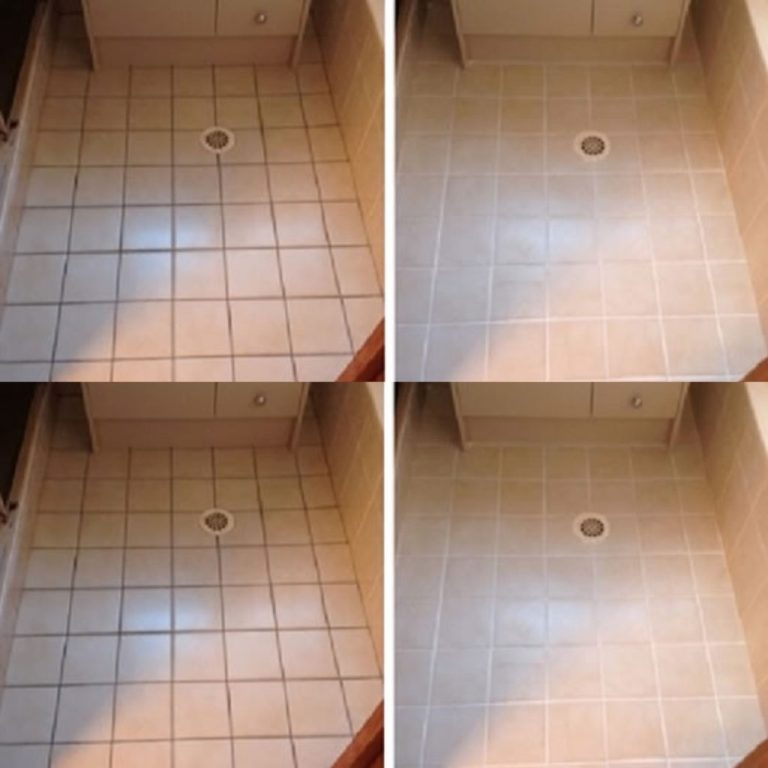ADVERTISEMENT
z. Then, add the dish soap and warm water and stir to combine. Pour this mixture into a spray bottle for easy application.
For Complete Cooking STEPS Please Head On Over To Next Page Or Open button (>) and don’t forget to SHARE with your Facebook friends
#### Step 2: **Spray the Cleaning Solution**
Generously spray the cleaning solution over the floor joints or grout lines. Make sure the solution is covering the entire area, including any particularly stubborn spots. Allow it to sit for about 5–10 minutes so the solution can break down dirt and grime.
#### Step 3: **Scrub the Joints**
Now comes the fun part! Take a toothbrush or a small scrub brush and start scrubbing the grout lines. Use gentle, circular motions to dislodge any trapped dirt, stains, or mold. Pay extra attention to any areas that are particularly dirty or stained. For heavy build-up, you can apply a little more baking soda directly onto the joints and continue scrubbing.
#### Step 4: **Rinse with Warm Water**
Once you’ve scrubbed all the joints, it’s time to rinse off the solution. Use a damp towel or mop to wipe down the floor, removing any leftover residue from the cleaning solution. You may need to repeat this step a couple of times to ensure that all the grime is gone.
#### Step 5: **Dry and Buff**
After rinsing, take a clean towel or dry mop and buff the floor joints. This will help remove any remaining moisture and give the joints a nice, clean finish. Plus, it’ll prevent any water from seeping back into the grout lines, which could lead to mold growth.
### 4. **Additional Tips for Stubborn Grout Stains**
Some floor joints may be particularly stubborn and resistant to regular cleaning. If you’re dealing with tough stains or mold, try these extra tips:
– **Hydrogen Peroxide Paste**: For tough stains, create a paste by mixing hydrogen peroxide with baking soda. Apply this paste to the grout lines and let it sit for 15-20 minutes before scrubbing it off. Hydrogen peroxide is a powerful disinfectant and can help lighten stubborn stains.
– **Steam Cleaning**: If you have a steam cleaner, use it to loosen dirt and grime from your floor joints. Steam is an excellent way to penetrate grout and tiles without the need for harsh chemicals.
– **Professional Grout Cleaner**: For heavily stained or old grout, you may need a specialized grout cleaner, but use it sparingly as it can be more abrasive.
### 5. **Prevention: How to Keep Floor Joints Clean Longer**
Now that you’ve cleaned your floor joints, you’ll want to keep them looking fresh for as long as possible. Here are a few prevention tips:
– **Seal Your Grout**: After cleaning, consider sealing the grout to prevent moisture from penetrating and causing mold or mildew growth.
– **Wipe Spills Immediately**: Clean up spills, especially liquids like coffee, wine, or oils, as soon as possible to avoid staining your grout lines.
– **Regular Maintenance**: Clean your floor joints regularly, even if it’s just a quick wipe with a damp cloth. This will prevent dirt from building up over time.
### 6. **Why DIY Floor Joint Cleaning Is the Best Option**
Cleaning your floor joints doesn’t have to be a time-consuming or expensive task. With a few simple ingredients and a little effort, you can achieve spotlessly clean grout lines without the need for harsh chemicals or professional help. DIY floor joint cleaning is not only cost-effective, but it also ensures you’re using safe, eco-friendly solutions in your home.
By following this guide, you’ll not only improve the appearance of your floors but also prolong the life of your tiles and grout, all while creating a healthier living space.
So, roll up your sleeves, grab your cleaning supplies, and let’s get those floor joints spotless—effortlessly!
